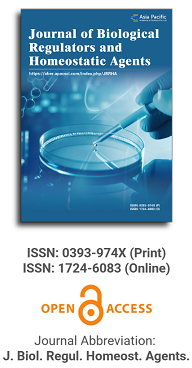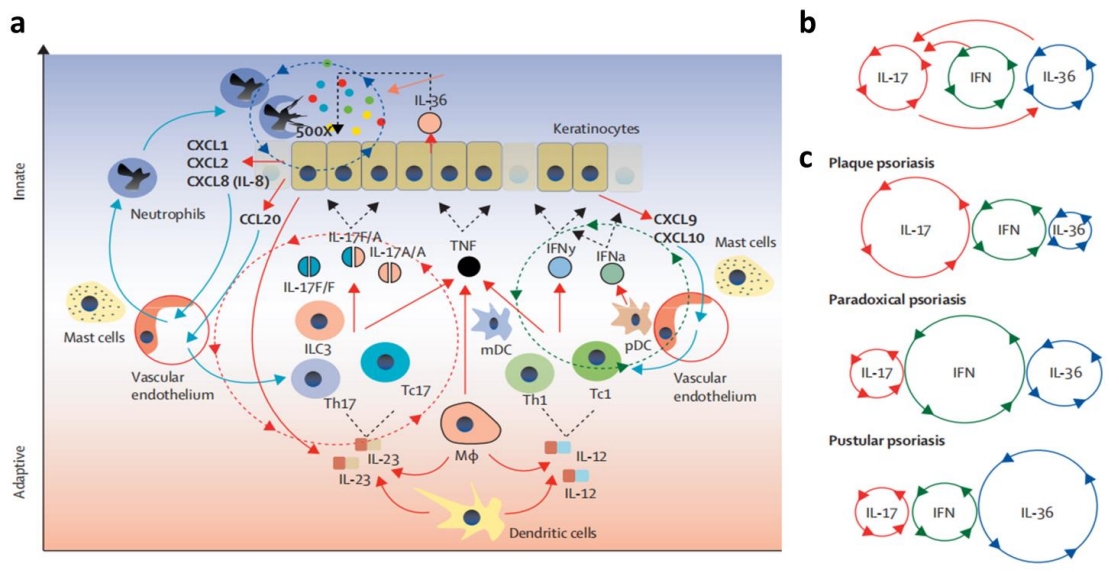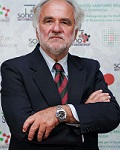
Asia Pacific Academy of Science Pte. Ltd. (APACSCI) specializes in international journal publishing. APACSCI adopts the open access publishing model and provides an important communication bridge for academic groups whose interest fields include engineering, technology, medicine, computer, mathematics, agriculture and forestry, and environment.

About therapeutic action of silver ions: A brief overview
Vol 39, Issue 2, 2025
Download PDF
Abstract
A problem of sufficiency of the widespread worldview about the mechanism of silver ion’s therapeutic action as its toxicity and destructivity for pathogens has been raised. Is such a therapeutic action always conjugated with direct destruction of the undesirable organisms such as bacteria, fungi, and cancer cells? Several works demonstrating a stimulating action of silver preparations on viability, proliferation of cells, behavioral and cognitive functions, and fertility of laboratory animals and on plants, as well as depletion of induced inflammation, have been considered. The observed effects can not be explained from the point of view of silver ion’s toxicity. A mechanism, which is in eustress (positive stress) induction by silver ions in the exposed organism, is suggested. The mechanism is confirmed by experimental observations and centuries of successful experience in the use of silver preparations in medicine. However, for eustress realization and distress (negative stress) prevention, significant attention should be paid to the form of silver in the preparation, its dose, and the period of exposure as well as to the adaptive resources of the organism. The revealed mechanism should be taken into account at the development and testing of medicine as well as when it may be applied in clinical practice.
Keywords
References
1. Alexander JW. History of the Medical Use of Silver. Surgical Infections. 2009; 10(3): 289-292. doi: 10.1089/sur.2008.9941
2. Scarpa E, Cascione M, Griego A, et al. Gold and silver nanoparticles in Alzheimer’s and Parkinson’s diagnostics and treatments. Ibrain. 2023; 9(3): 298-315. doi: 10.1002/ibra.12126
3. Gonzalez-Carter DA, Leo BF, Ruenraroengsak P, et al. Silver nanoparticles reduce brain inflammation and related neurotoxicity through induction of H2S-synthesizing enzymes. Scientific Reports. 2017; 7(1). doi: 10.1038/srep42871
4. Takáč P, Michalková R, Čižmáriková M, et al. The Role of Silver Nanoparticles in the Diagnosis and Treatment of Cancer: Are There Any Perspectives for the Future?. Life. 2023; 13(2): 466. doi: 10.3390/life13020466
5. More PR, Pandit S, Filippis AD, et al. Silver Nanoparticles: Bactericidal and Mechanistic Approach against Drug Resistant Pathogens. Microorganisms. 2023; 11(2): 369. doi: 10.3390/microorganisms11020369
6. Das B, Dash SK, Mandal D, et al. Green synthesized silver nanoparticles destroy multidrug resistant bacteria via reactive oxygen species mediated membrane damage. Arabian Journal of Chemistry. 2017; 10(6): 862-876. doi: 10.1016/j.arabjc.2015.08.008
7. Xu Z, Zhang C, Wang X, et al. Release Strategies of Silver Ions from Materials for Bacterial Killing. ACS Applied Bio Materials. 2021; 4(5): 3985-3999. doi: 10.1021/acsabm.0c01485
8. Park HJ, Kim JY, Kim J, et al. Silver-ion-mediated reactive oxygen species generation affecting bactericidal activity. Water Research. 2009; 43(4): 1027-1032. doi: 10.1016/j.watres.2008.12.002
9. Polet M, Laloux L, Cambier S, et al. Soluble silver ions from silver nanoparticles induce a polarised secretion of interleukin-8 in differentiated Caco-2 cells. Toxicology Letters. 2020; 325: 14-24. doi: 10.1016/j.toxlet.2020.02.004
10. Khina AG, Krutyakov YA. Similarities and Differences in the Mechanism of Antibacterial Action of Silver Ions and Nanoparticles. Applied Biochemistry and Microbiology. 2021; 57(6): 683-693. doi: 10.1134/s0003683821060053
11. Song Y, Guan R, Lyu F, et al. In vitro cytotoxicity of silver nanoparticles and zinc oxide nanoparticles to human epithelial colorectal adenocarcinoma (Caco-2) cells. Mutation Research/Fundamental and Molecular Mechanisms of Mutagenesis. 2014; 769: 113-118. doi: 10.1016/j.mrfmmm.2014.08.001
12. Pomatto LCD, Davies KJA. The role of declining adaptive homeostasis in ageing. The Journal of Physiology. 2017; 595(24): 7275-7309. doi: 10.1113/jp275072
13. Kawata K, Osawa M, Okabe S. In Vitro Toxicity of Silver Nanoparticles at Noncytotoxic Doses to HepG2 Human Hepatoma Cells. Environmental Science & Technology. 2009; 43(15): 6046-6051. doi: 10.1021/es900754q
14. Egorova EM, Krupina NA, Kaba SI, et al. The Effect of Aqueous Solution of Silver Nanoparticles on Rat Behavior. Nanobiotechnology Reports. 2022; 17(2): 248-260. doi: 10.1134/s2635167622020082
15. Ninsiima HI, Eze ED, Ssekatawa K, et al. Green tea silver nanoparticles improve physiological motor and cognitive function in BALB/c mice during inflammation. Heliyon. 2023; 9(3): e13922. doi: 10.1016/j.heliyon.2023.e13922
16. Antsiferova A, Kopaeva M, Kashkarov P. Effects of Prolonged Silver Nanoparticle Exposure on the Contextual Cognition and Behavior of Mammals. Materials. 2018; 11(4): 558. doi: 10.3390/ma11040558
17. Antsiferova AA, Kopaeva MY, Kashkarov PK. Effects of Silver Citrate Prolonged Exposure on Behavioral and Cognitive Functions of Mice. Nanobiotechnology Reports. 2024; 19(3): 437-445. doi: 10.1134/s263516762460130x
18. Selye H. Stress without Distress (Russian). Progress Moscow; 1976.
19. Flurkey K, Mcurrer J, Harrison D. Mouse Models in Aging Research. The Mouse in Biomedical Research; 2007. doi: 10.1016/b978-012369454-6/50074-1
20. Petritskaya EN, Rogatkin DA, Rusanova EV. Comparative Characteristics of Antibacterial Effect of Silver and Nanosilver in Vitro. Almanac of Clinical Medicine. 2016; (44-2): 221-226. doi: 10.18786/2072-0505-2016-44-2-221-226
21. Dziendzikowska K, Węsierska M, Gromadzka-Ostrowska J, et al. Silver Nanoparticles Impair Cognitive Functions and Modify the Hippocampal Level of Neurotransmitters in a Coating-Dependent Manner. International Journal of Molecular Sciences. 2021; 22(23): 12706. doi: 10.3390/ijms222312706
22. Zinicovscaia I, Ivlieva AL, Petritskaya EN, et al. Unexpected reproductive effect of prolonged oral administration of silver nanoparticles in laboratory mice. Ekologiya cheloveka (Human Ecology). 2020; 27(10): 23-30. doi: 10.33396/1728-0869-2020-10-23-30
23. De Matteis V, Cascione M, Toma CC, et al. Silver Nanoparticles: Synthetic Routes, In Vitro Toxicity and Theranostic Applications for Cancer Disease. Nanomaterials. 2018; 8(5): 319. doi: 10.3390/nano8050319
24. Przhevalskaya DA, Bandarenka UY, Shashko AY, et al. Effect of Silver Nanoparticles Synthesized by ‘Green’ Methods on the Growth of in vitro Culture of Betula pendula L. whole Plants. The Open Agriculture Journal. 2022; 16(1). doi: 10.2174/18743315-v16-e2206270
25. Przemieniecki SW, Ruraż K, Kosewska O, et al. The impact of various forms of silver nanoparticles on the rhizosphere of wheat (Triticum aestivum L.)—Shifts in microbiome structure and predicted microbial metabolic functions. Science of The Total Environment; 2024. doi: 10.1016/j.scitotenv.2023.169824
26. Al-Taie AAG, Aboohanah MA, Issa FH. Effect of Silver Nanoparticles in Stimulating Some Active Compounds in Garlic Callus Under Salt Stress, in Vitro. IOP Conference Series: Earth and Environmental Science. 2021; 923(1): 012023. doi: 10.1088/1755-1315/923/1/012023
27. Gudkova OI, Bobkova NV, Feldman NB, et al. Study of the Biological Activity of Arabinogalactan-stabilized Silver Nanoparticles toward Watercress Lepidium sativum L. Curled and Plant Pathogenic Micromycete Fusarium sambucinum. Agricultural Biology. 2021; 56(3): 500-510, doi: 10.15389/agrobiology.2021.3.500eng
28. Desai AS, Singh A, Edis Z, et al. An In Vitro and In Vivo Study of the Efficacy and Toxicity of Plant-Extract-Derived Silver Nanoparticles. Journal of Functional Biomaterials. 2022; 13(2): 54. doi: 10.3390/jfb13020054
29. Bilberg K, Hovgaard MB, Besenbacher F, et al. In Vivo Toxicity of Silver Nanoparticles and Silver Ions in Zebrafish (Danio rerio). Journal of Toxicology. 2012; 2012: 1-9. doi: 10.1155/2012/293784
30. Mohamed DS, Abd El-Baky RM, Sandle T, et al. Antimicrobial Activity of Silver-Treated Bacteria against other Multi-Drug Resistant Pathogens in Their Environment. Antibiotics. 2020; 9(4): 181. doi: 10.3390/antibiotics9040181
31. González-Garibay AS, Vallejo-Cardona AA, Villarreal-Amézquita AA, et al. The In Vitro Cytotoxic Potential of Biosynthesized Silver Nanoparticles in MIA PaCa-2 Cells Supported with an In Silico Study. Inorganics. 2024; 12(12): 317. doi: 10.3390/inorganics12120317
32. Khan T, Umar A, Waheed A, et al. Assessment of possible potential toxicity risks in albino mice exposed to amine coated silver nanoparticles. Kuwait Journal of Science. 2024; 51(2): 100172. doi: 10.1016/j.kjs.2023.100172
33. Masouleh FF, Amiri BM, Mirvaghefi A, et al. Silver nanoparticles cause osmoregulatory impairment and oxidative stress in Caspian kutum (Rutilus kutum, Kamensky 1901). Environmental Monitoring and Assessment. 2017; 189(9). doi: 10.1007/s10661-017-6156-3
34. Arab-Bafrani Z, Zabihi E, Hoseini SM, et al. Silver nanoparticles modify the hypothalamic-pituitary-interrenal axis and block cortisol response to an acute stress in zebrafish, Danio rerio. Toxicology and Industrial Health. 2022; 38(4): 201-209. doi: 10.1177/07482337221086128
35. Kirmichi A. Psychosomatics. How to recognize and neutralize chronic stress (Russian). Exmo. Moscow; 2023.
36. Shumakova AA, Shipelin VA, Apryatin SA, Gmoshinskii IV. The Content of Essential and Toxic Microelements in the Organs of Mice of Various Lines Receiving a High-Carb High-Fat Diet and Supplemented with Quercetin (Russian). Problems of Nutrition. 2020; 89(2): 28-45. doi: 10.24411/0042-8833-2020-10014
37. Mazo VK, Gmoshinskii IV, Shirina LI. New Food Sources of Essential Antioxidant Microelements (Russian). Miklosh. Moscow; 2009.
Supporting Agencies
Copyright (c) 2025 Author(s)
License URL: https://creativecommons.org/licenses/by/4.0/

This site is licensed under a Creative Commons Attribution 4.0 International License (CC BY 4.0).

Medical Genetics, University of Torino Medical School, Italy

Department of Biomedical, Surgical and Dental Sciences, University of Milan, Italy

